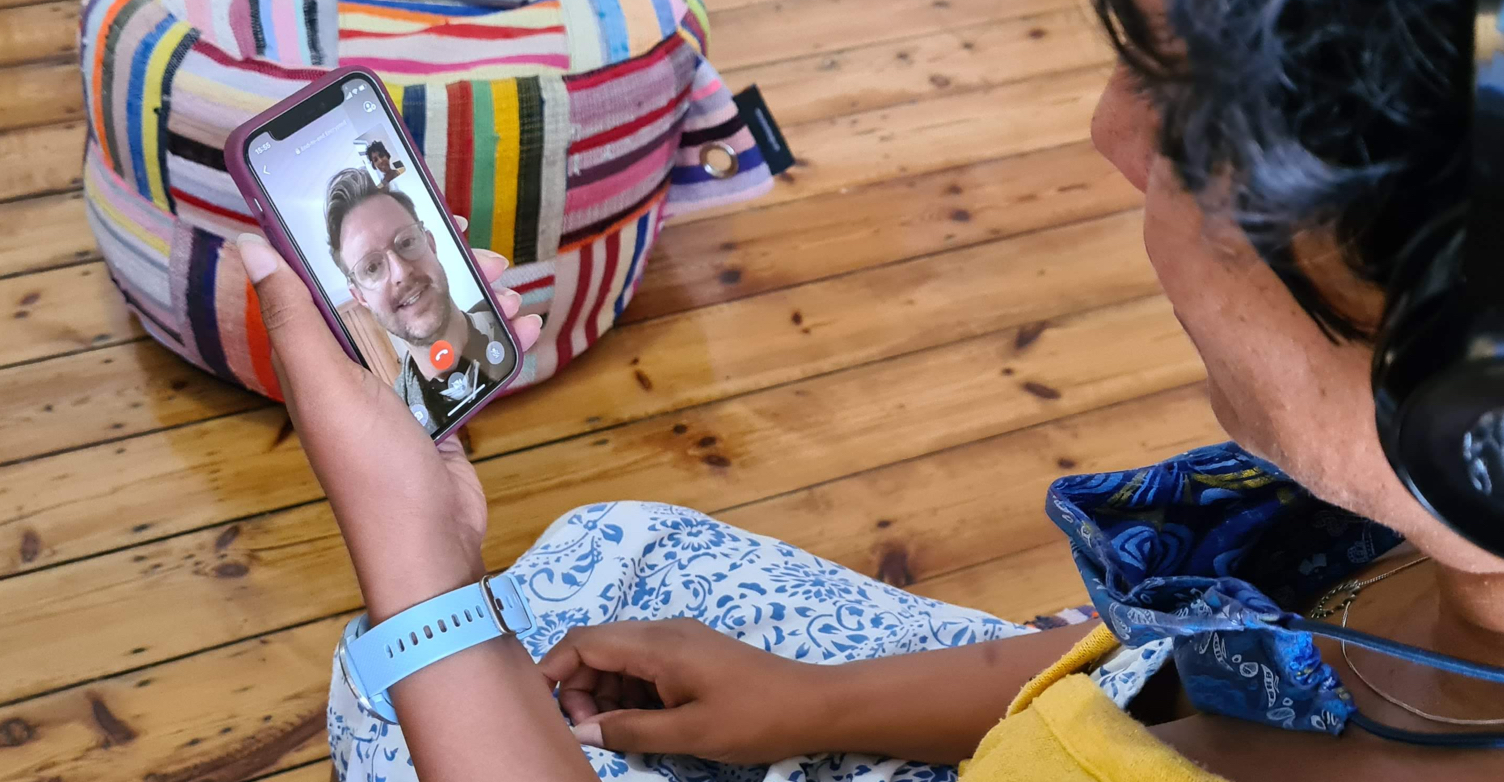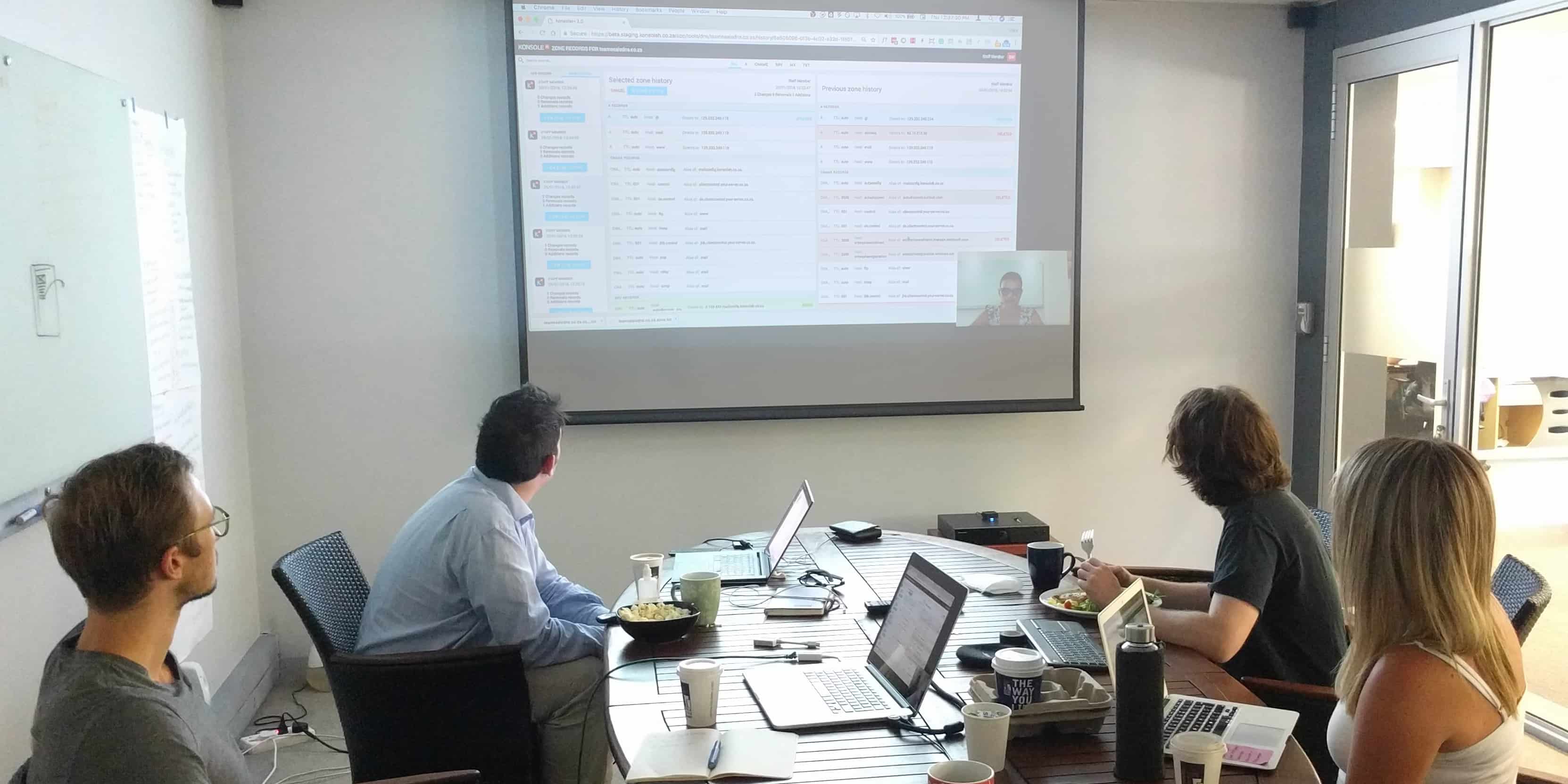
Usability testing
Apps, prototypes, sites, & services
User testing is all about engaging with customers to understand why they behave the way they do.
There is a direct correlation between the number of hours each team member is exposed directly to real users and the improvements we see in the designs. It’s the closest thing to a silver bullet.
Jared Spool
In his Center Centre – UIE article: Fast path to Great UX – Increased Exposure Hours.
Test assumptions, remove opinion and gain insight into your customers that will help you to generate ideas that actually address their needs and increase conversion and engagement.
When is user testing useful?
Testing a new app or digital concept
Launching something totally new? Put a low-fidelity prototype in front of your customers to find out if they understand the concept and the value proposition before you invest in building your solution.
Use a medium-fidelity prototype to see if customers are able to complete tasks quickly and uncover what issues they face.
Validating an iterated design
Have you made some changes to an existing design? Before going live, gather insight into how the solution increases conversion and mitigate unexpected consequences.
Gaining a deeper understanding of a problem
User testing is not just about testing designs but ensuring you know all you can about the problem you are solving. During usability tests, we have in-depth conversations with your customers about previous experiences or even user-test competitors’ experiences.
Understanding the 'why' behind user behaviour
Quantitative data such as analytics will tell you what customers are doing and qualitative research like user testing will tell you why you are seeing that behaviour.
We can help answer why users drop off at certain points in your journey, or why you are seeing unexpected behaviour.

Remote or in-person?
For the majority of our usability tests, we recommend running them remotely. We have found remote sessions to be more cost-effective and allow for a more diverse audience from across the world. But sometimes, remote is not suitable, and for that reason, we offer both.
Read more about our remote vs in-person research journey
Remote
We like Zoom, but we can chat with customers on any digital platform that supports video, audio, and screen sharing. We are comfortable with WhatsApp, Teams, Google Meet, UserZoom, and Lookback.
We stream our sessions over a password-protected Vimeo channel so teams can watch live! During the sessions, we chat in group chats to discuss what we are seeing, insights and questions for further investigations. These sessions will remain as recordings for others to watch later.
We share a communal online Miro board before the sessions, so if anyone wants to, they can add comments or take notes. Afterwards, we will analyse the sessions and create a detailed findings report.
In-person
Depending on where in the country you would like the sessions to take place, we will organise a suitable venue. We can organise formal market research facilities with one-way glass, or even just two meeting rooms with good internet. We will organise lunch and have informal discussions between sessions. It’s usually a very fun day and we welcome teams to stay the whole day if possible.
We can also visit customers in their spaces, to learn about their unique context. (We are often visit nurses to learn about how they use technology in the clinic).

An in-person user testing at a client’s office.
Got questions or want to book?
How it usually works
Kick off
We start with a kick-off session with you to determine what needs to be tested. This could be mobile or desktop; a prototype, concept, app or live site.
We will also need to define who we will be recruiting for the day. We use two types of dimensions to help create a recruit brief: demographic dimensions (age, income, location…) and behavioural dimensions (tech adverse, relies on social proof, currently looking for life cover…).
Recruit respondents
Finding the right people to test is vital so we use a team of the best recruiters in South Africa, Europe and the USA. We create a carefully designed screener based on your brief to ensure that respondents meet your target market criteria. We also recruit one extra in case there are any last-minute cancellations.
If we are running the sessions remotely, we make sure they have access to the internet and have a device that can load your site or prototype. We run a test call with them before the sessions to confirm what phone or computer they will be using, test their internet, and buy them data if needed.
Discussion guide
Based on what needs to be tested or what learnings you are looking for, we will formulate the best way to gather the findings. Knowing what types of questions to ask, and when to ask them, comes from a familiarity with research theory and years of experience.
We will share this with you before the test to get your input.
Facilitate sessions
We usually test with 5 customers a day in 1-hour sessions. We stream the sessions live and record them for watching later.
We recommend that team members watch as many sessions live as they can. If we are testing in person, we welcome teams for a day of deep insight, good discussions, and great food.
A session usually includes upfront ethnographic questions as well as task-based scenarios. The questions below have more detail on the structure of a usability testing session.
Present findings
There are two ways we can process and present the findings after the test:
A formal debrief document laying out all the complications discovered during testing. Paired with videos featuring the most impactful segments, this document highlights the most important findings for which, we create precise, actionable recommendations for both the short and long term, including possible sketches of the solutions.
This option is recommended for involving stakeholders who weren’t able to watch the tests, or if you’re not in a position to make immediate changes and need a record of the findings.
A workshop run a day or two after usability testing has finished. Working with the project team, we focus on the most pressing issues, coming up with quick wins to better the user experience. This option has a much faster turnaround time and closer involvement with your team.
How we measure findings
We measure findings on a four-level severity rating. This is based on how long it took the participant to complete a task as well as how confused they were about what they were doing.
Good thing
This is something that a customer will enjoyed or completed easily.
Papercut
Caused confusion and doubt. Some of these are inevitable, but enough of these can cause “death by a thousand paper cuts”.
Speedbump
Slowed down the completion of the task and caused some irritation. These will reduce trust and credibility, and if this happens a few times, customers will probably give up.
Roadblock
The task was not completed. These issues will obstruct a process completely and will stop a customer from taking action. These will also reduce repeat usage.
Packages
We also offer a first-of-it’s-kind research subscription.
Workshop
5 user interviews (±60mins each)
Viewing day: Watching the recorded videos of the sessions we did the day before. This is a little easier than watching them live as remote interviewing and testing often has technical issues.
Workshop day: A full day online workshop with your team, directly after the viewing day, where we analyse and prioritise the findings then come up with quick win solutions and next steps.
GOOD FOR:
Longer, more complex topics, apps or websites. Requires the team to be available for two full days, stay involved and take notes. Great for teams that need quick, actionable insight.
Report
5 user interviews (±60mins each)
Viewing day (Optional): Watching the recorded videos of the sessions we did the day before.
Report: We will create a full report of the customer insights or UX issues with severity ratings and a ‘highlights reel’ of the most interesting parts of the interviews. This will include clips, recommendations and next steps.
GOOD FOR:
Larger teams that have stakeholders that are not able to attend full day workshops or viewing days and need a debrief to view in their own time or to keep as a record.
Custom
If you need something a little different, we can tailor our UX research to fit your team’s needs
This could include:
- A workshop and report
- More participants (5, 10, or 15)
- Getting designs ready for testing
- Ideation or persona workshops
- Journey mapping and JTBD
- Consolidating other research
- Product team training
Get in touch and we will create a proposal for you.
Usability testing questions?
At How Might We, we’re big on helping businesses discover the power of usability testing. Our expert team is all about delivering meticulous and comprehensive testing services, giving you a crystal-clear picture of your users’ interactions and experiences.
Whether you’re after website user experience testing, online usability testing, or want to get a leg up with competitive usability testing, we’ve got you covered. Our testing methods are flexible, allowing us to conduct tests remotely or through in-depth interviews to suit your needs.
Ready to discover how usability testing can revolutionise your digital presence? Don’t hesitate to get in touch for a chat or to find out more about what we can offer. With How Might We, usability isn’t just a box to tick—it’s the key to creating top-notch user experiences and nailing digital success. Let’s create something amazing together!
Usability in user experience is the secret to digital success.
Chat with us and let’s turn your user insights into actionable improvements!